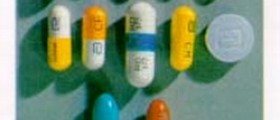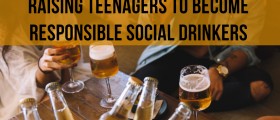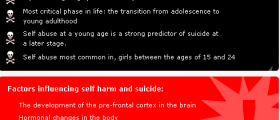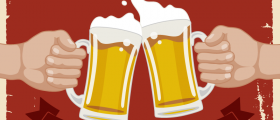
Overview of Underage Drinking
Alcohol abuse is characterized by a pattern of use of the drug which causes numerous health, work, family, financial, and social problems. Frequent drinking also leads to needing larger amounts of alcohol as time goes on, problems caused by wearing off of the effects of the substance, and various other every day issues. In addition there are 5 stages of teenage alcohol abuse, which attempt to explain the process and offer possible solutions. For instance, stage one is characterized by availability of alcohol, so reducing the risk factors which makes adolescents prone to drinking is very important at the initial stage. During the second stage individuals shift back and forth from occasional use to more regular weekly consumption, while the third stage is manifested by increasing the amount of alcohol an individual needs to get intoxicated. The fourth stage consists of preoccupation with intoxication while many aspects of the everyday life are suffering. Lastly, if individuals are functional only when intoxicated they are usually in the fifth stage of substance abuse.
Effects of Alcohol
Alcohol is the most widespread drug among young individuals in the US. More than 50 percent of adolescents consume alcohol on a monthly basis. When engaged in drinking alcohol teenagers often intake excess amounts and in many cases drink more than 5 drinks on occasion. In addition, they often combine alcohol with other drugs such as marijuana, further elevating the negative effects on health produced by drugs. Aside from hindering physical health, alcohol consumption also damages the psychological well being. For instance, alcohol abuse interferes with cognitive, memory, and attention abilities. Not surprisingly, the younger the individual is when they begin to drink the more likely it is that they will develop health problems associated with alcohol. In addition, boys who start drinking at an early age do not stay in school as long as boys who do not consume alcohol. When it comes to girls, many of those who drink heavily at young age claim they have contemplated or attempted suicide. Statistical data show that alcohol plays a part in more than 50 percent of adolescent deaths every year while 2,000 individuals under the age of majority die annually in motor vehicle accidents in which alcohol was involved. Furthermore, young people who drink substantial amounts of alcohol also have the tendency to engage in risky behavior, promiscuous sex or even be the victim or perpetrator of sexual assault. Aside from marijuana, teenagers often mix alcohol with cocaine and heroin. Drug abuse of any sort usually hides psychological issues such as depression, anxiety or lack of social skills. In addition, alcohol intoxication is relatively easily detectable via foul odor that surrounds the person, red eyes, irritability or passiveness, and so on. When it comes to the alcohol effects on the brain of a young person, it should be noted that the brain is in a state of intense development until the early 20s, molding and hard wiring in readiness for the challenges of adulthood ahead. During brain development, it is getting ready for learning, memory, planning, emotional stability, and thinking for the rest of life. Once the brain is developed there can be no changes so this period is therefore vitally important and anything that interferes with it is obviously destructive. As large amounts of alcohol interfere with brain development there is a possibility that the teenagers’ brain will never reach full capacity, and they in turn will not achieve their full potential in life.
How is Prevention Done?
By being good role models parents can influence their children in the positive direction thus preventing many forms of misbehaving, including alcohol and drug abuse. Teenagers should be made aware of the drinking laws as well as of the consequences in case the laws are broken. Parents also need to promote a responsible attitude towards consuming alcohol. Primary care givers or parents ought to adopt a zero tolerance alcohol policy for the first three grades of high school as children at that age are at the highest risk for harm. It is also recommended that if there is a need for alcohol introduction it should be done moderately and responsibly and in association with food. In addition, there are many young individuals who are consuming alcohol before the age of 15. Statistical data show that 24 percent of 8th graders report using alcohol, while 9.4 percent have been intoxicated in the past 30 days. Some of these people have serious problems with alcohol by the time they enter high school. One of the most dominant pathways for preventing underage drinking is through family. Family elements, such as relationships between child and parent, discipline approaches, communication, monitoring and supervision, as well as parental interest and involvement can strongly influence alcohol and drug abuse among teenagers. Experts suggest many different parent-child activities such as skills training in a field of interest to the child, behavioral parent training, and if needed behavioral family therapy.

















Your thoughts on this
Loading...